Blog
B2B guide to asset leasing in the United Kingdom
Asset leasing is an important strategy for UK businesses, as it enables access to essential equipment without a hefty initial investment.
In the current market, the trend towards asset finance reflects a shift in how companies manage their capital expenditure, opting for flexible, cost-effective solutions. There are multiple benefits associated with asset leasing: it preserves working capital, offers tax benefits, and allows businesses to stay abreast of the latest technology without large upfront expenditures.
In a fast-paced commercial environment, the ability to rapidly adapt and upgrade equipment through leasing is invaluable.
If you’re considering asset leasing for your business in the UK, this guide explores the key advantages to equip you with the knowledge and strategies needed to navigate and capitalise on asset finance opportunities, ultimately enhancing your financial flexibility and competitive edge.
Key Takeaways
- Strategic importance of asset leasing: Asset leasing offers UK businesses financial flexibility, allowing access to necessary equipment without large upfront investments.
- Understanding different lease types: It’s crucial to understand various leasing agreements, like operating leases, finance leases, and hire purchase agreements, to choose the best option for your specific business needs.
- Effective management of leased assets: Proper tracking, managing, and integrating leased assets into business operations are vital for maximising their utility and aligning with company goals.
- Navigating end-of-lease considerations: Understanding and preparing for end-of-lease options, including renewal, termination, and transitioning to new assets, is crucial for seamless business operations and financial planning.
Table of Contents
What is asset leasing?
Asset leasing is a financial arrangement where a lessor provides assets for use to a lessee for an agreed period, in exchange for regular payments. This approach is common in business equipment acquisitions, where outright purchase can be prohibitively expensive. Key assets that are often leased include business phone systems, printers and copiers, laptops and notebooks, business mobiles and smartphones, software, general IT hardware, and IP handsets.
There are several types of asset leasing agreements, such as operating leases, finance leases, and hire purchase agreements, each with unique terms and structures. Operating leases are typically short-term and often used for equipment that quickly becomes outdated, like IT hardware. Finance leases are more akin to a loan and are used for long-term asset acquisition. Hire purchase agreements allow the lessee to take over ownership of the asset at the end of the lease term.
Legally, asset leasing binds both the lessor and lessee to agreed terms, which can include maintenance responsibilities, lease duration, and termination conditions. Financially, it impacts a business’s cash flow and balance sheet. Leasing equipment can reduce capital expenditure, potentially offer tax benefits, and improve financial ratios, making it a strategic financing option for businesses.

10 steps to follow when leasing assets in the United Kingdomm
Asset leasing in the UK requires a strategic approach tailored to your business requirements. This guide outlines 10 essential steps, from assessing your business’s specific asset needs to choosing the right leasing agreement, managing financial risks, and navigating the end of your lease.
Our aim is to help you navigate the process smoothly, ensuring you make informed decisions that align with your operational goals and financial capacity. Follow these steps to optimise the benefits of asset leasing for your business, enhancing efficiency and financial health.
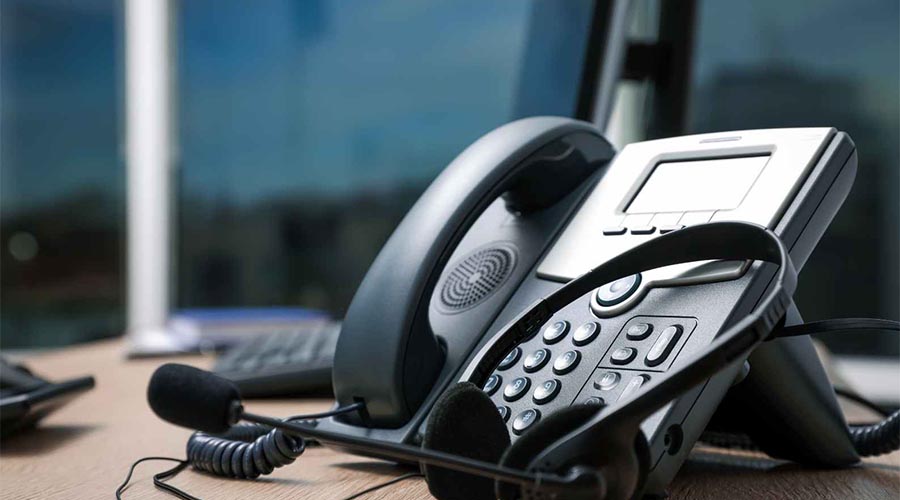
1. Assess business needs and goals
The first step in asset leasing is to carefully evaluate your business’s operational needs and growth objectives. Identify the assets that are key to your daily operations, whether they are general technology like laptops and notebooks or industry-specific equipment like call centre software. Which assets are right for you depends on how well they align with your operational requirements.
Consider how these assets will serve your immediate needs and contribute to long-term goals, especially if expansion is on the horizon. Leasing provides the flexibility to adapt your asset base as your business grows, allowing for future upgrades without the commitment of ownership.
Lastly, prioritise the scalability of your leased assets. Ensure that the assets you choose today can support your business’s future needs, whether that involves handling increased demand or integrating new technologies. This approach guarantees that your asset selection will not only meet current business requirements but also support long-term business development.

2. Research asset leasing companies
When venturing into asset leasing, choosing the right finance company is crucial. Start by establishing clear criteria for what makes a leasing company reliable. This could include their experience in finance leasing, customer service quality, and the range of equipment leasing options they offer.
It’s essential to thoroughly compare the terms and conditions offered by different providers. Look beyond just the monthly payments and consider factors like the length of the lease, the end-of-lease options, and any additional fees or penalties. These terms can significantly impact your overall leasing experience and should align with your business’s financial strategy and operational needs.
Another key factor is the financial stability and market reputation of the leasing companies you’re considering. A company with a strong financial background and positive customer reviews is more likely to provide a stable and trustworthy leasing experience. Research their history, read customer testimonials, and check their standing in the industry to gauge their reliability.
3. Understand the different types of leasing agreements
Navigating the world of asset leasing means understanding the different types of agreements available.
Each type, be it an operating lease, finance lease, or hire purchase, serves unique business needs and financial scenarios.
Below, we explore common lease agreements in the UK. These insights will assist you in selecting the lease option that most closely aligns with your business’s strategic needs.

Operating lease
In the UK, an operating lease is a flexible, short-term agreement ideal for businesses seeking temporary use of assets without the intent of ownership. This type of lease is particularly advantageous for assets with a short lifespan or rapid obsolescence, like IT equipment, laptops, and smartphones. It stands out from other lease types due to its lower initial costs and short-term commitment.
Financially, operating leases are treated as off-balance sheet financing, which can positively affect a company’s liquidity ratios and borrowing capacity. This accounting benefit helps businesses maintain a healthier balance sheet. Additionally, operating leases typically provide operational benefits such as reduced responsibility for maintenance and ease of upgrading to newer models, aligning with technological advancements and evolving business needs.
Finance lease (capital lease)
A finance lease is a long-term leasing agreement where the lessee assumes the benefits and responsibilities of asset ownership for accounting purposes. This type of lease is particularly suited to high-value assets with a long operational life, such as industrial machinery and vehicles.
From a financial perspective, financial leases offer potential tax benefits, including capital allowances and the opportunity to claim depreciation, thereby reducing taxable income. However, these leases also impact a company’s balance sheet by increasing its debt-to-equity ratio, as the leased asset and corresponding liability are recorded on the balance sheet.
Ideal for businesses that need expensive equipment but prefer to spread out the cost, finance leases allow companies to access and eventually benefit fully from high-cost assets without the upfront capital expenditure of purchasing.
Hire-to-purchase agreement
Hire-to-purchase agreements offer a unique pathway to asset ownership for businesses planning long-term asset acquisition.
Under this agreement, a business makes regular payments towards the use of an asset, with the intention of owning it at the end of the leasing term. This approach is especially beneficial if you want to acquire high-cost equipment such as vehicles or specialised machinery.
Financially, these agreements allow businesses to manage cash flow by distributing the expenditure over time, while also gradually building equity in the asset. The asset appears on the balance sheet during the lease term, contributing to the company’s asset base. Hire-to-purchase agreements are ideal for businesses that require the certainty of asset ownership but prefer to avoid the substantial upfront investment typically associated with direct purchases.
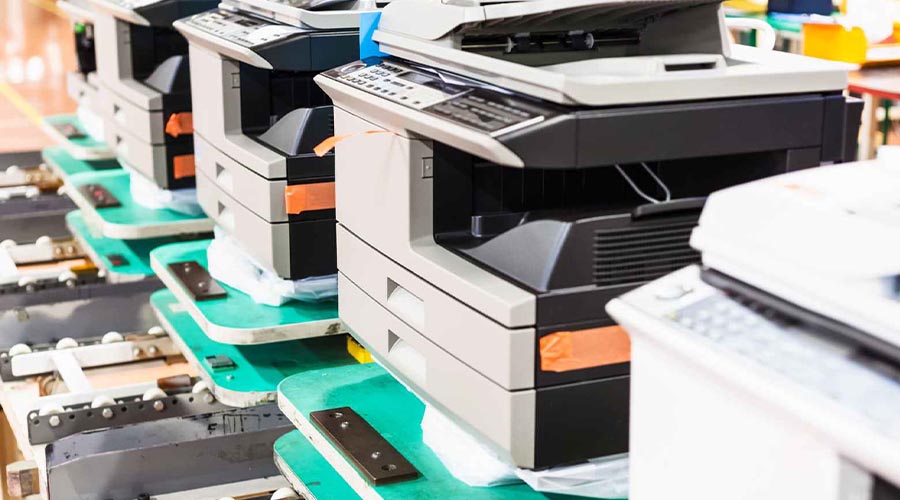
4. Calculate lease costs, budget, and plan accordingly
Accurately calculating the total cost of a lease is pivotal for sound financial planning. Start by adding up the regular payments while looking for hidden fees, such as service charges or termination penalties. It’s important to consider these costs in their entirety to understand the lease’s impact on your balance sheet and cash flow.
How you incorporate a lease payment into your financial plan will depend on the specific lease type. Operating leases are treated as operational expenses, influencing cash flow without affecting working capital. Finance leases impact both the balance sheet and working capital, as they are recorded as an asset and a liability. Hire-to-purchase agreements are similar to finance leases in balance sheet impact, with the asset appearing as both an asset and a corresponding liability, affecting depreciation and interest calculations. Proper alignment of these payments with your capital cost/s is vital for maintaining a balanced cash flow and avoiding budget overruns.
Understanding the tax implications of asset leasing is also critical. Leases often have a VAT element that can be claimed back, depending on your accounting methods. Additionally, lease payments are generally considered a business expense, which could reduce your taxable income. However, the exact tax treatment will vary based on the lease type, so it’s important to consult with a financial expert to fully understand these implications.
By carefully considering these aspects – the total cost, including hidden fees, budgeting within your financial plan, and tax implications – you can make more informed decisions about leasing and its impact on your business’s finances.
5. Understand your lease agreement terms
Understanding the terms of a lease agreement is crucial to ensure it aligns with your business’s financial and operational needs. The terms define the responsibilities and rights of both the lessor and lessee, impacting how the asset will be used and financed over the lease period. Key aspects to focus on include the length of the lease, often referred to as the fixed period, which should align with your business’s asset utilisation plan and financial forecasting.
A comprehensive understanding of the finance package is also essential. This includes not just the monthly lease payments but also any upfront costs, late fees, maintenance responsibilities, and termination clauses. These terms can significantly affect the total cost of leasing and your financial planning.
Additionally, pay attention to clauses regarding asset condition, usage limitations, and return
conditions, as these can incur additional costs or penalties if not adhered to. Ensure that the lease terms provide a balance between flexibility and cost-effectiveness, taking into account potential changes in your business environment or asset needs
You need to understand these lease terms in detail and how they fit into your broader business strategy so that you can fully leverage the benefits of leasing while managing the associated risks and costs.

6. Evaluate supplier support and training
Evaluate the level of support and training provided by your asset leasing supplier to ensure the smooth and reliable use of your leased assets. The quality of supplier support can greatly impact your ability to maximise the benefits of the leased equipment.
First, assess the supplier’s customer service responsiveness and availability. Reliable and prompt support is crucial, especially in situations where equipment malfunctions or technical issues arise. Inquire about their service level agreements (SLAs) to familiarise yourself with the guaranteed response times and resolution procedures.
Training is another vital aspect to consider. Proper training on the use and maintenance of leased assets can significantly enhance their efficiency and longevity. Check if the supplier offers comprehensive training programmes for your employees, either through in-person sessions or digital resources. This training should cover not only the basic operations of the equipment but also best practices for maintenance and troubleshooting.
Additionally, evaluate the supplier’s capacity to provide ongoing support throughout the lease term. This includes regular maintenance services, updates, and potentially upgrading the equipment if needed. A supplier with a commitment to support and training can add considerable value to the leasing arrangement, ensuring that your team can utilise the leased assets with confidence.
7. Understand the challenges and risks associated with asset leasing
Managing risks in asset leasing requires a comprehensive understanding and proactive handling of potential challenges. One of the primary risks is financial commitment. Leasing contracts require regular payments over a period, which can strain cash flow, especially if business conditions fluctuate unpredictably.
Operational risks also play a significant role. Relying on leased assets means dependence on the lessor for maintenance and timely replacements. Any delay or inadequacy in these services can lead to operational disruptions, affecting business uptime.
Another key risk is technological obsolescence, particularly relevant for assets that rapidly evolve, like IT equipment. There’s a risk that leased assets might become outdated before the lease term ends, potentially hindering performance or requiring premature upgrades.
Contractual risks are also important to consider. It’s vital to thoroughly understand the lease agreement to avoid unexpected costs. These include penalties for early termination, usage limits, and return conditions, all of which can inflate the overall cost of leasing.
By identifying these risks and implementing strategic measures to mitigate them, businesses can ensure that asset leasing aligns with their long-term goals and does not expose them to undue financial and operational vulnerabilities.

8. Prepare to integrate the leased assets into your business
Seamlessly integrating leased assets into existing business operations demands careful planning and execution.
Start by assessing how the new equipment will fit into your current operational workflow. This involves understanding the operational requirements and constraints of the leased assets and how they will interact with your existing processes and systems. It’s crucial to identify any modifications or adjustments needed in your operational setup to accommodate the new equipment.
Training your staff to use these new assets is another vital step. This includes ensuring that they understand the maintenance requirements and best practices to ensure optimal performance and longevity of the assets. Well-trained staff can significantly enhance their own productivity through the correct use of the equipment.
Further, ensuring the compatibility of leased assets with your existing systems is essential. This includes both technical compatibility, such as software and hardware interfaces, and process compatibility, ensuring that the new equipment can be integrated into your current operational workflows.
Planning for this compatibility ahead of the assets’ arrival will facilitate a smoother transition and quicker realisation of the benefits that leasing can provide to your business.
9. Monitor and manage your leased assets
Effective monitoring and management of leased assets are crucial for maximising their utility and ensuring they meet your business needs.
Setting up a robust system for tracking these assets is the first step. This might include inventory management software for logging details such as usage, maintenance schedules, and lease expiration dates. Different types of equipment, like phone systems, printers, call centre software, and IP phones, each require tailored tracking methods due to their distinct usage patterns and maintenance needs.
Regular maintenance and servicing of these assets are vital to keep them in optimal working condition. Establish a routine maintenance schedule based on the type of equipment and its usage intensity. For instance, printers might need frequent cartridge replacements and servicing, while IP phones might require software updates and occasional hardware checks.
It’s also important to periodically review and update your leasing strategies. This involves assessing the performance of the leased assets against your business objectives and needs. For example, a phone system may need upgrading to handle increased call volumes as your business grows, while software might need updates for enhanced features or security.
Regularly evaluating these aspects will ensure that your leased assets continue to support your business effectively.
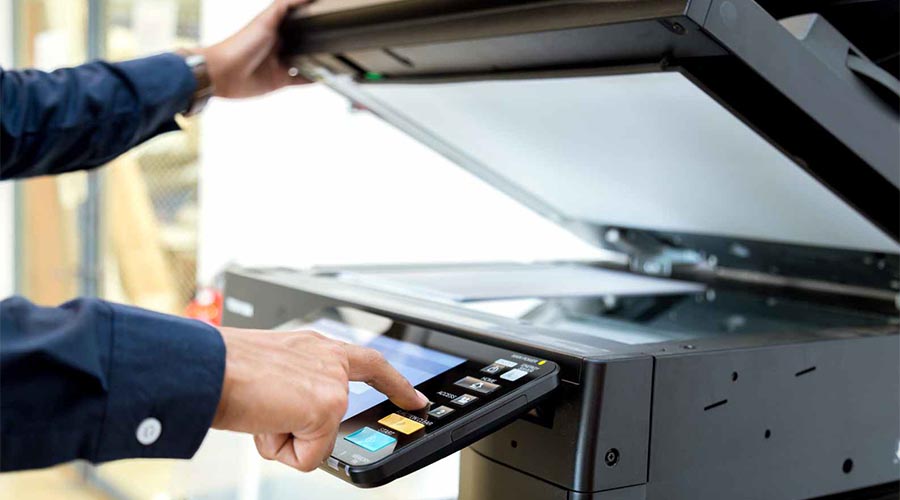
10. End-of-lease options and considerations
As you approach the end of the agreed lease period, understanding your options and making informed decisions is crucial for a smooth transition.
Begin by reviewing the decision-making criteria for lease renewal or termination. This involves evaluating the assets’ current performance against your business needs, considering factors like technological relevance, operational efficiency, and financial impact.
The importance of comprehending the termination clauses and renewal options in your contract cannot be overstated. These clauses dictate the terms of returning the asset, any final payments due, and the possibilities of renewing the lease. Ensure you understand these terms well in advance to avoid unexpected obligations or costs.
When returning assets at the end of a lease, follow the steps outlined in your lease agreement. This may include ensuring the asset is in the agreed condition, managing logistics for return, and handling final inspections or paperwork.
Finally, develop transition strategies for replacing or upgrading leased assets. This might involve negotiating new leases for more advanced equipment or transitioning to different asset types that are better suited to your evolving business needs.
Proactive planning in this phase ensures business continuity and the integration of more efficient or advanced technologies in your operations.

Final thoughts on leasing business assets in the United Kingdom
Asset leasing is a strategically sound option for UK businesses. It offers flexibility, aligns with cash flow needs, and provides access to the latest technology without hefty upfront investments.
Looking ahead, the asset leasing market is set to grow and adapt, with trends indicating a shift towards more flexible and technology-driven solutions, catering to the dynamic needs of modern businesses.
Businesses must stay informed and adaptable in their asset leasing strategies to capitalise on these evolving opportunities. Continuously learning about new leasing options and market trends will enable businesses to make decisions that align with their changing needs.
For comprehensive solutions in asset leasing, ranging from business phone systems to laptops and IT hardware, contact United Telecoms UK. We offer tailored leasing options designed to support the diverse requirements of businesses across various sectors.


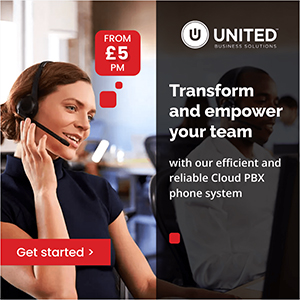
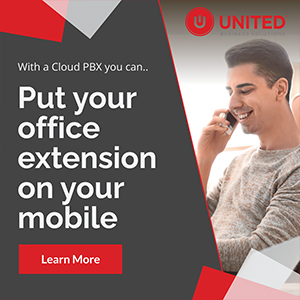


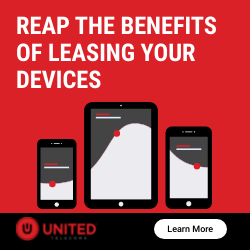
Got questions? Contact our experts today.
We service the following locations across London and the United Kingdom
Greater London: City of London, Hounslow, Barking and Dagenham, Islington, Barnet, Kensington and Chelsea, Bexley, Kingston upon Thames, Brent, Lambeth, Bromley, Lewisham, Camden, Merton Croydon, Newham, Ealing, Redbridge, Enfield, Richmond upon Thames, Greenwich, Southwark, Hackney, Sutton, Hammersmith and Fulham, Tower Hamlets, Haringey, Waltham Forest, Harrow, Wandsworth, Havering, Westminster and Hillingdon.
What Our Customers Say
“Once we approved the installations we were kept up to date daily with the levels of progress on our various sites and were very impressed with the final installation”
Spear Properties
Get In Touch
London Office
2 Osborne Way
Epsom
Surrey
KT19 8GR
United Kingdom (UK)
Tel: 033 1630 0516
Tel: 020 3399 8011
Email: info@united-telecoms.co.uk
We're the experts so that you don't need to be!
PBX Phone System
Beginner's Guide
Voice & Hosted PBX
Resources
PABX Relocation and
Reinstallation
PBX Phone System
Resources